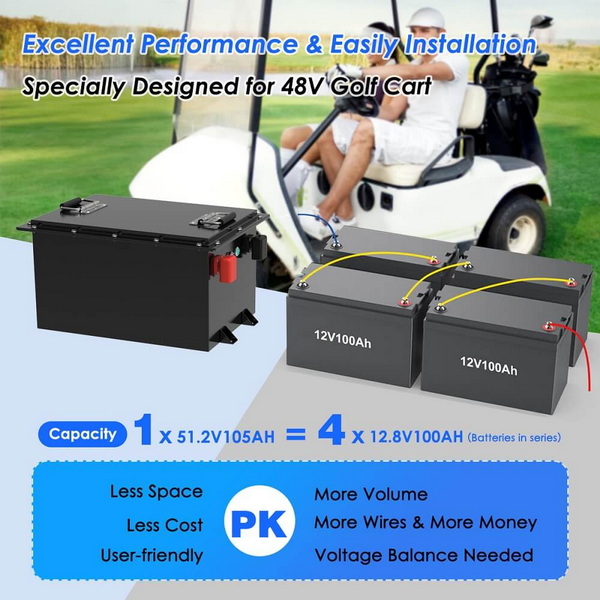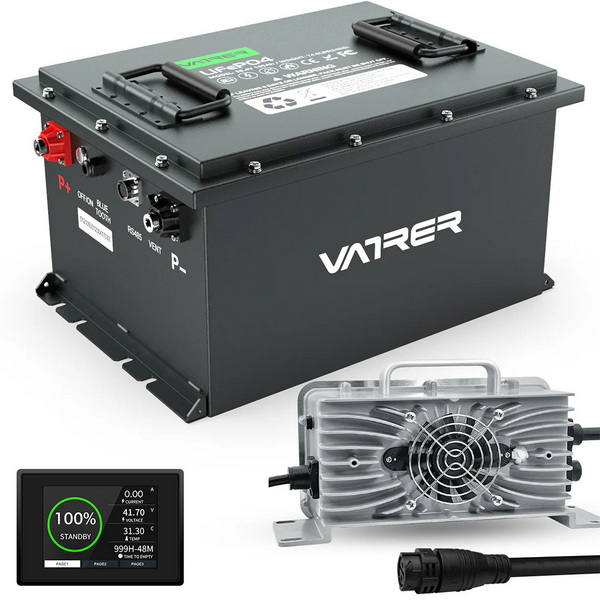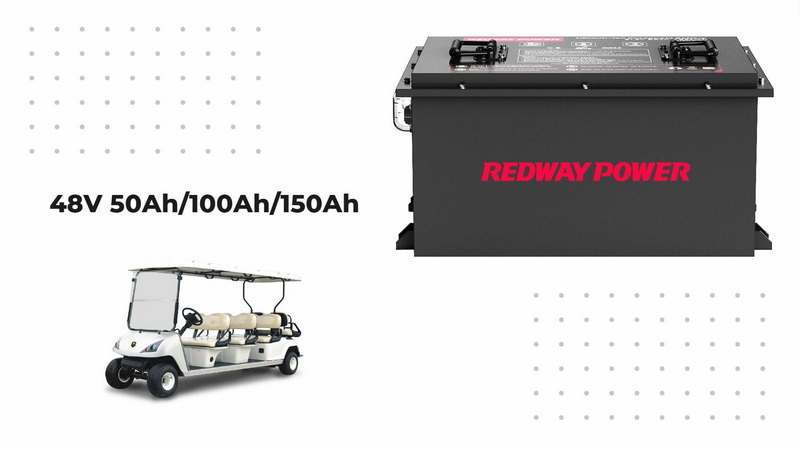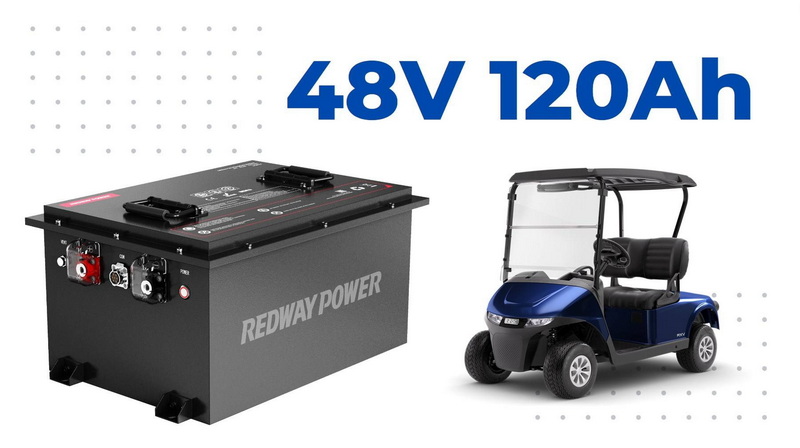Content Menu
● Understanding Golf Cart Batteries
● Cost Breakdown of Golf Cart Batteries
● Average Costs
● Factors Affecting Battery Lifespan
● Maintenance Tips for Golf Cart Batteries
● Signs You Need New Batteries
● Installing New Golf Cart Batteries
● Comparing Battery Types
● Environmental Considerations
● Cost-Saving Tips
● Conclusion
● FAQ
>> 1. What type of battery is best for my golf cart?
>> 2. How often should I replace my golf cart batteries?
>> 3. Can I mix different types of batteries in my golf cart?
>> 4. How do I know if my golf cart batteries are failing?
>> 5. Is it worth investing in lithium-ion batteries?
Electric golf carts have become increasingly popular for both recreational and practical uses, providing a quiet and eco-friendly way to navigate golf courses, parks, and even neighborhoods. However, like any vehicle, they require proper maintenance and occasionally need battery replacements. This article will explore the costs associated with electric golf cart batteries, the types available, their lifespan, maintenance tips, and much more.

Understanding Golf Cart Batteries
Golf carts typically use multiple batteries to provide the necessary voltage and power. The most common types of batteries used in electric golf carts include:
- Flooded Lead Acid Batteries: The most traditional and widely used option. They are affordable but require regular maintenance.
- AGM (Absorbed Glass Mat) Batteries: A type of lead-acid battery that is sealed and does not require watering. They are more expensive but offer better performance.
- Lithium-Ion Batteries: The newest technology in golf cart batteries. They are lightweight, require minimal maintenance, and have a longer lifespan compared to lead-acid batteries.
Cost Breakdown of Golf Cart Batteries
The cost of replacing golf cart batteries can vary significantly depending on several factors:
1. Type of Battery:
- Lead-Acid Batteries: Typically range from $500 to $1,500 for a full set (usually 6 to 8 batteries).
- AGM Batteries: Generally cost between $1,000 and $2,000.
- Lithium-Ion Batteries: These can be the most expensive option, ranging from $2,000 to $6,000 depending on capacity and brand.
2. Number of Batteries Needed: Most golf carts require multiple batteries connected in series to achieve the desired voltage (36V or 48V). For example:
- A 36V system commonly uses six 6V batteries.
- A 48V system may use four 12V or six 8V batteries.
3. Brand and Quality: Premium brands like Trojan or Dakota Lithium may charge more but often provide better performance and longevity.

Average Costs
To give you a clearer picture, here's a summary of average costs:
| Battery Type | Cost Range |
| Lead-Acid | $500 - $1,500 |
| AGM | $1,000 - $2,000 |
| Lithium-Ion | $2,000 - $6,000 |
Factors Affecting Battery Lifespan
The lifespan of golf cart batteries varies by type:
- Flooded Lead Acid Batteries: Last about 4 to 6 years with proper maintenance.
- AGM Batteries: Typically last around 5 to 7 years.
- Lithium-Ion Batteries: Can last up to 10 years or more due to their advanced technology and lower maintenance needs.
Maintenance Tips for Golf Cart Batteries
Proper maintenance can extend the lifespan of your golf cart batteries:
- Regular Charging: Keep your batteries charged between uses. Avoid letting them discharge below 20%.
- Watering (for Flooded Lead Acid): Regularly check water levels and refill with distilled water as needed.
- Cleaning: Keep terminals clean and free from corrosion by using a mixture of baking soda and water.
- Inspection: Regularly check for signs of wear or damage on cables and connections.
Signs You Need New Batteries
Recognizing when it's time to replace your golf cart batteries is crucial:
- Decreased range or power when driving.
- Slow charging times or inability to hold a charge.
- Physical signs of damage or leakage from the batteries.
Installing New Golf Cart Batteries
Replacing golf cart batteries can be done as a DIY project if you have basic mechanical skills. Here's a simplified guide:
1. Disconnect the old batteries carefully by removing the negative terminal first followed by the positive terminal.
2. Remove the old batteries from their compartments.
3. Place the new batteries in the same configuration as the old ones.
4. Connect the positive terminals first followed by the negative terminals.
5. Ensure all connections are tight and secure before testing your cart.
For a detailed visual guide on installation, refer to instructional videos available online that demonstrate step-by-step processes.

Comparing Battery Types
When considering which battery type to purchase for your electric golf cart, it's essential to weigh the pros and cons of each option:
| Feature | Flooded Lead Acid | AGM | Lithium-Ion |
| Cost | Low | Medium | High |
| Maintenance | High (requires watering) | Low (sealed) | Very low (no maintenance) |
| Lifespan | 4-6 years | 5-7 years | 10+ years |
| Weight | Heavy | Moderate | Light |
| Charge Time | Longer | Moderate | Fast |
| Depth of Discharge | Limited | Better than lead-acid | Excellent |
Environmental Considerations
As electric golf carts gain popularity, so does the importance of considering environmental impacts related to battery disposal.
- Lead-Acid Battery Recycling: Lead-acid batteries contain hazardous materials that can harm the environment if not disposed of properly. Most states have regulations requiring recycling these batteries at designated facilities.
- Lithium-Ion Recycling: While lithium-ion batteries are less toxic than lead-acid counterparts, they still require careful recycling processes due to their chemical components. Many manufacturers offer take-back programs to ensure responsible disposal.
Cost-Saving Tips
If you're looking to save money on your golf cart battery expenses, consider these tips:
- Buy in Bulk: If you have multiple carts or know others who need new batteries, consider purchasing in bulk for discounts.
- Shop Around: Prices can vary significantly between retailers; compare prices online and at local stores before making a purchase.
- Consider Refurbished Options: Some companies offer refurbished batteries at lower prices; however, ensure they come with warranties.
Conclusion
Choosing the right battery for your electric golf cart involves considering various factors such as cost, type, maintenance requirements, and expected lifespan. While lead-acid batteries are affordable upfront, lithium-ion options may offer better long-term value despite their higher initial costs. Proper maintenance can significantly enhance battery life, ensuring that your golf cart remains a reliable mode of transportation for years to come.

FAQ
1. What type of battery is best for my golf cart?
The best battery type depends on your usage needs; lithium-ion offers longevity and low maintenance while lead-acid is more budget-friendly but requires regular upkeep.
2. How often should I replace my golf cart batteries?
Typically every 4 to 10 years depending on the battery type and usage frequency.
3. Can I mix different types of batteries in my golf cart?
No, it is not recommended to mix different types or brands as it can lead to performance issues and potential hazards.
4. How do I know if my golf cart batteries are failing?
Signs include reduced power during operation, slow charging times, or visible damage to the battery casing.
5. Is it worth investing in lithium-ion batteries?
Yes, if you prioritize performance and minimal maintenance over initial costs; they offer longer lifespans and faster charging times compared to lead-acid options.











































